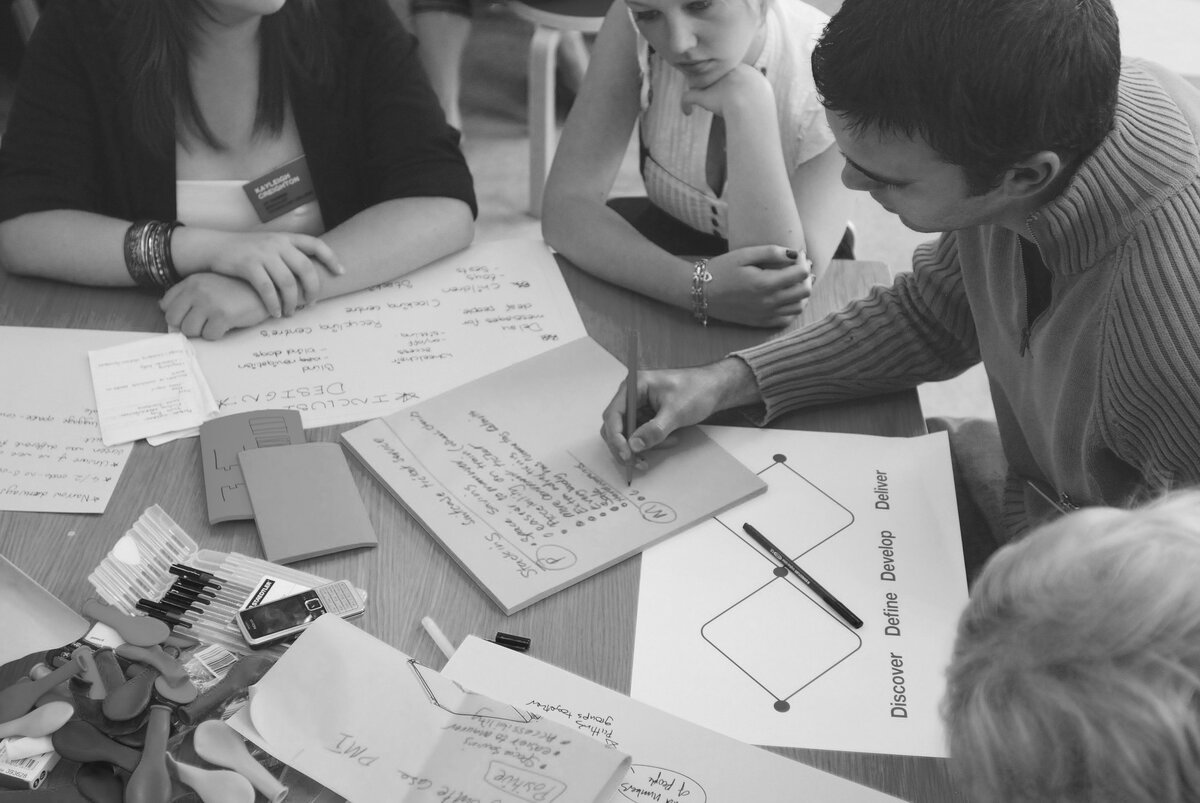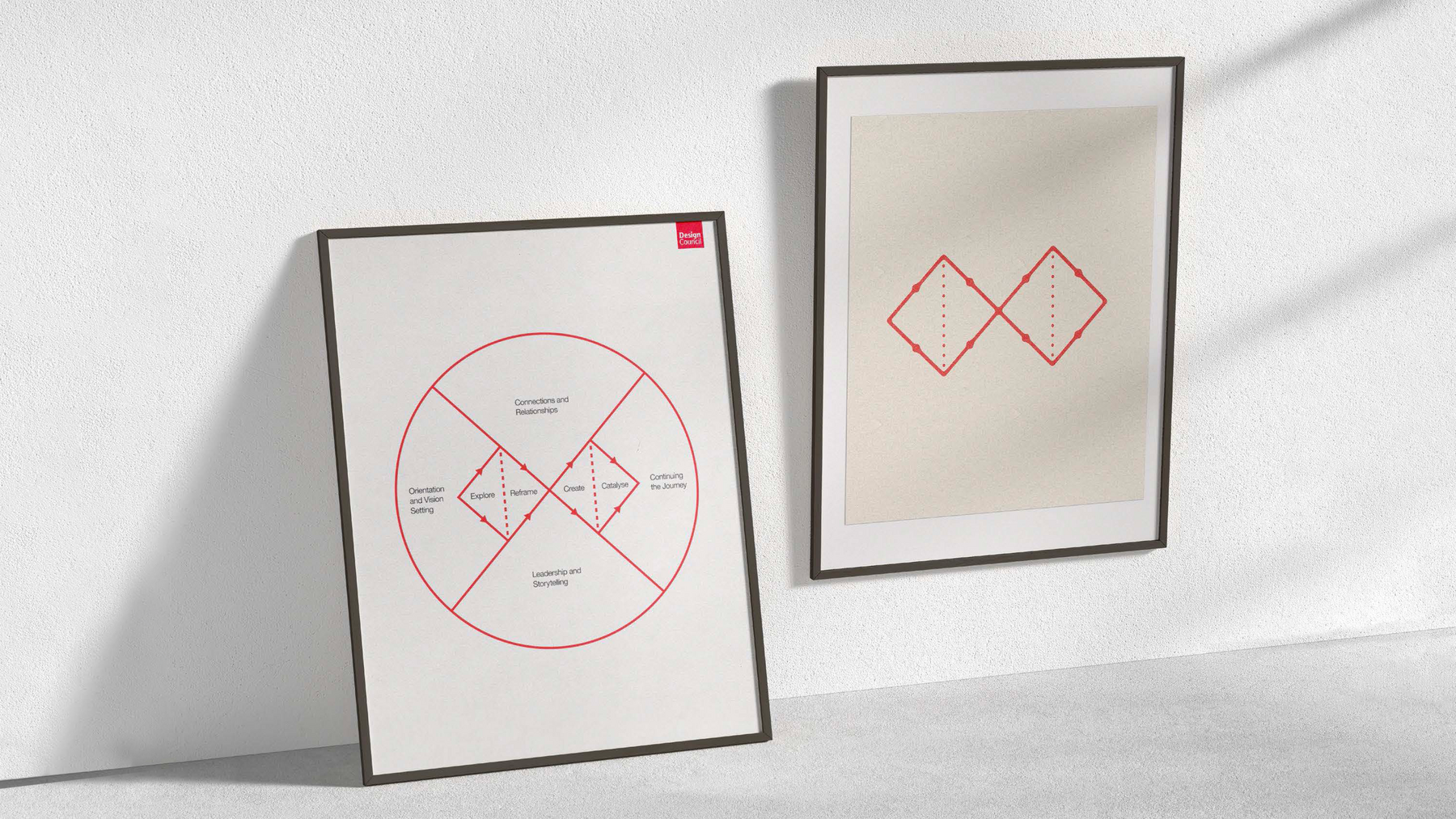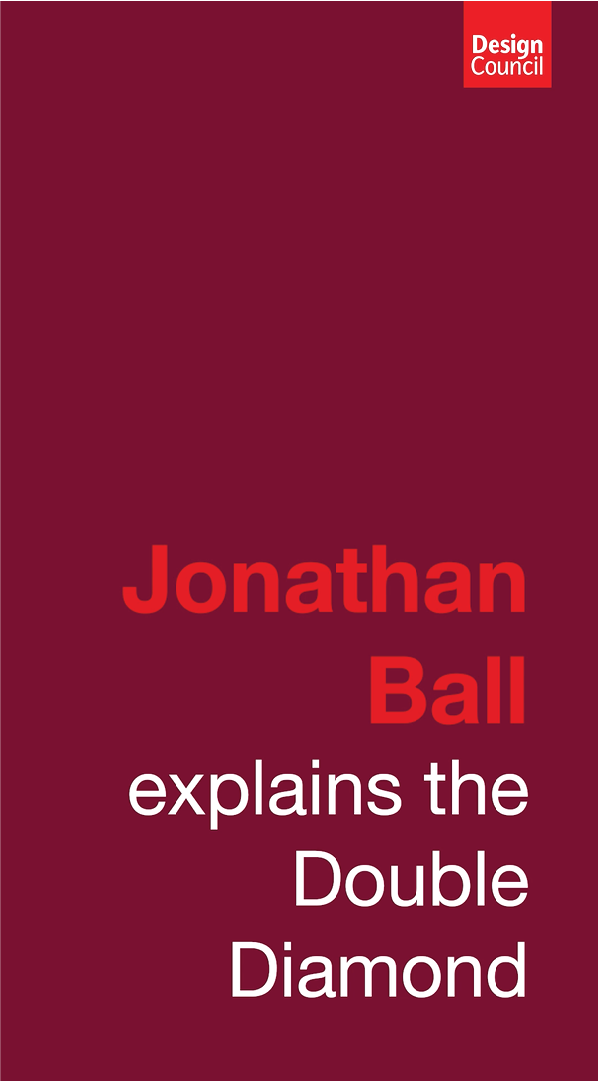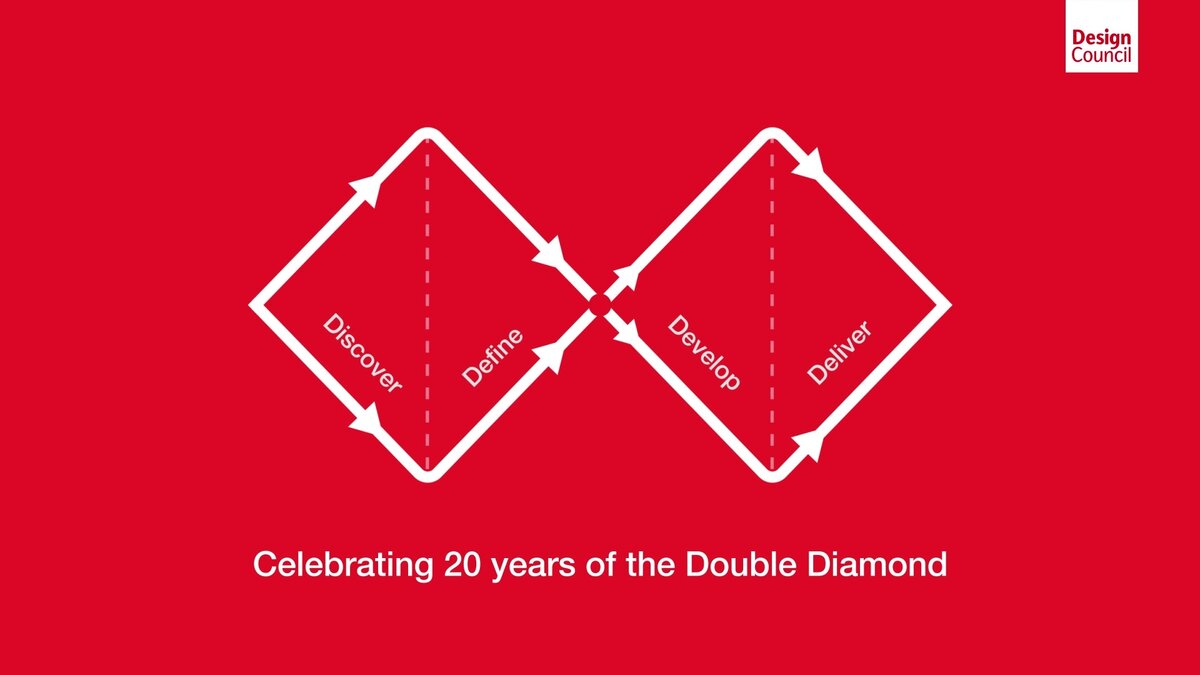The Double Diamond
A universally accepted depiction of the design process.
From humble beginnings to a cornerstone of design language.
The Double Diamond is a visual representation of the design and innovation process. It’s a simple way to describe the steps taken in any design and innovation project, irrespective of methods and tools used.

 The Double Diamond by the Design Council is licensed under a CC BY 4.0 license.
The Double Diamond by the Design Council is licensed under a CC BY 4.0 license.
How to use the Double Diamond.
The first diamond helps people understand, rather than simply assume, what the problem is. It involves speaking to and spending time with people who are affected by the issues.
The insight gathered from the discovery phase can help you to define the challenge in a different way.
The second diamond encourages people to give different answers to the clearly defined problem, seeking inspiration from elsewhere and co-designing with a range of different people.
Delivery involves testing out different solutions at small-scale, rejecting those that will not work and improving the ones that will.

The history of the Double Diamond
In 2003, the Design Council was promoting the positive impact of adopting a strategic approach to design and the value of ‘design management’ as a practice. However, they had no standard way of describing the supporting process.
Richard Eisermann, Design Council’s then Director of Design and Innovation, thought that this was incompatible with their broader message, so he asked his team, “How do we describe design process?”
Deconstructing a common process
"The team put in the work trying to define design, process, methods, etc. What we did with the Double Diamond was codify it, rename the steps and popularise it. It was important work, but we were certainly standing on the shoulders of giants." Richard Eisermann
Love design?
We are proud to publish our new book Eight Decades of British Design, encapsulating 80 years of British design history.
Everything from the creation of the Double Diamond to Margaret Calvert and Jock Kinneir’s iconic road signs, Vivienne Westwood’s punk revolution to James Dyson’s radical reinventions.
British design has continuously pushed boundaries and in this book we proudly present a richly layered portrait of an industry in perpetual evolution with insights from leading voices, including Deyan Sudjic, Penny Sparke, Max Fraser, and Priya Khanchandani.


Evolving with the Framework for Innovation
Many of the organisations we support learn something more about the underlying problems which can send them back to the beginning of their diamond work. Making and testing very early stage ideas can be part of discovery. And in an ever-changing and digital world, no idea is ever ‘finished’.
So we incorporated those into an expanded Double Diamond with the framework for innovation.



